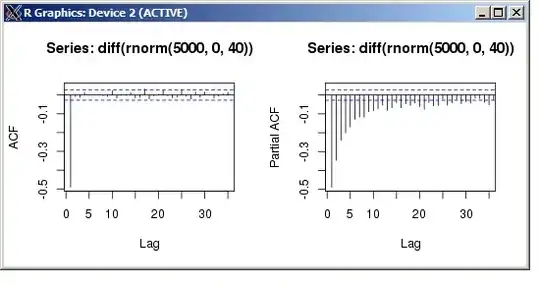I'm working on the following problem:
When applying for a secretarial position, $n$ candidates line up in random order for interviews, where the manager after each interview has to decide to take or decline that candidate. His assessment is qualitative in the sense that at interview $k\geq 2$, he observes only $Y_{k,n}$, the indicator that candidate $k$ is better than candidates $1,\ldots,k−1,$ and his goal is to find a strategy whose probability of selecting the best candidate is close to the maximal value $p_n^*$. It is easy to see that the optimal strategy is to select candidate $$\tau_{k,n}\stackrel{def}{=}\inf\{l\geq k: Y_{l,n}\} = 1\}\land n $$ for some $k\in\{2,\ldots,n\}$. Let $k_n^*$ denote the optimal such $k$. Plot simulation estimates of $k_n^*$ and $p_n^*$ for $n = 5,\ldots, 50,$ and compare with the known asymptotics $k_n^*\sim n/e, p_n^*\sim 1/e$.
Question: Why would you choose to simulate $k_n^*$? And if you decided to do so; how? The fact that you could simulate $k_n^*$ indicates that $k_n^*$ has some kind of distribution. I don't get why since $k_n^*$ seems (I'm apparently mistaken) like a deterministic value to me.
The secretary problem is described here. For an arbitrary $k$, the probability that the best applicant is selected is equal to $$P(k) = \sum_{i = 1}^n P(\text{applicant $i$ is selected$\cap$applicant $i$ is the best})$$ If we fast forward through some derivations we find that $$P(k) = \sum_{i=r}^n\dfrac{r-1}{i -1}\times \dfrac{1}{n} = \dfrac{r-1}{n}\sum_{i = r}^n\dfrac{1}{i-1}$$ This means that $k_n^*$ can be found by just checking for which $k$ the value $P(k)$ is maximal.
Edit: The only thing I can think of right now is that you might want to simulate per case which $k$ would give you the optimal candidate. But then again, we would know which $k$ that would be; if the optimal candidate were on the $m$-th place, we would want to skip the first $m-1$ candidates, so I don't see what simulation would bring to the table.
